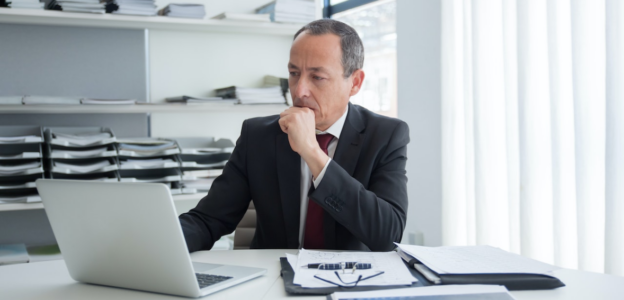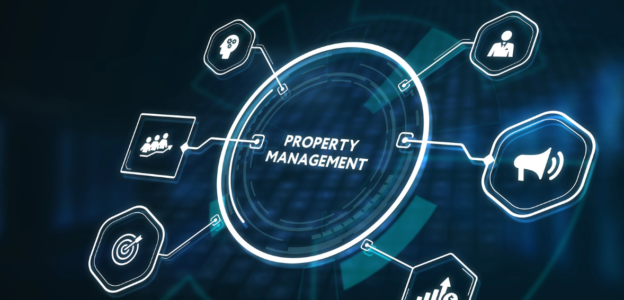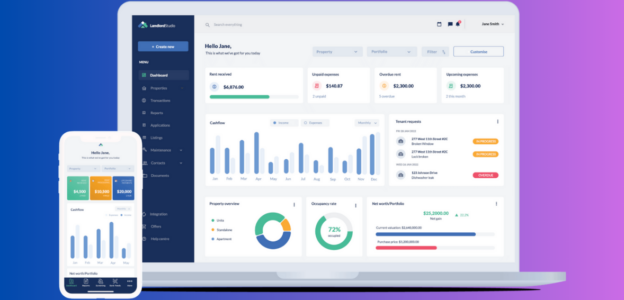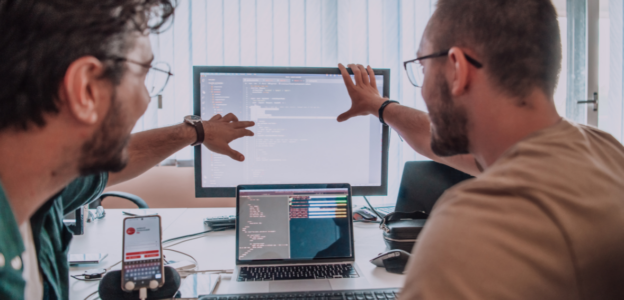Effective property management in Ontario requires a blend of best practices and innovative software solutions. As property managers navigate local regulations, tenant expectations, and market conditions, adopting strategic approaches and leveraging technology becomes essential. This article explores key practices for successful property management in Ontario, such as understanding local regulations, implementing efficient tenant screening, and leveraging technology for operational efficiency.
Additionally, it provides an overview of top property management software Ontario tailored to the Ontario market. From Buildium and Hostaway to Yardi Voyager and Rentec Pro, these software solutions offer a range of features designed to streamline operations, enhance tenant satisfaction, and improve financial management. By combining proven practices with advanced tools, property managers can optimize their operations and achieve greater success in managing properties across Ontario.
Best Practices for Property Management in Ontario

Managing properties in Ontario involves navigating a complex landscape of local laws, tenant expectations, and market dynamics. Property managers must adopt a comprehensive approach to ensure they meet legal requirements, maintain property values, and satisfy tenants.
Here are best practices for effective property management in Ontario:
Understand local regulations and compliance: Ontario has specific regulations that govern residential rentals, including the Residential Tenancies Act (RTA) and the Human Rights Code. Property managers must be well-versed in these laws to avoid legal pitfalls. This includes understanding the rules about rent increases, tenant eviction, and maintenance obligations. Regular updates and training sessions can help keep property management teams informed and compliant.
Implement efficient tenant screening processes: Effective tenant screening is crucial to ensuring reliable and responsible occupants. This process should include credit checks, employment verification, and references from previous landlords. Implementing a thorough screening process reduces the risk of rent defaults and property damage, ensuring a more stable tenant base.
Maintain clear communication channels: Clear and consistent communication is vital for successful property management. Property managers should establish regular communication routines, using emails, newsletters, or tenant portals to keep tenants informed about important updates and developments. Effective communication not only enhances tenant satisfaction but also helps in managing expectations and resolving issues promptly.
Adopt preventive maintenance strategies: Preventive maintenance involves regular inspections and routine maintenance to prevent minor issues from becoming major problems. This includes seasonal checks, such as ensuring heating systems are operational before winter, and routine maintenance of common areas. Such strategies extend the lifespan of property assets and reduce the likelihood of costly emergency repairs.
Ensure transparent financial management: Transparent and meticulous financial management is essential. This involves accurate record-keeping of all income and expenditures, regular financial reporting, and compliance with tax obligations. Utilizing property management software Ontario can help streamline financial operations, ensure accuracy, and provide easy access to financial data.
Leverage technology for operational efficiency: Technology plays a crucial role in modern property management. From automated tenant screening tools and online rent collection platforms to mobile maintenance request systems, technology can significantly enhance operational efficiency. Property managers should invest in reliable property management software Ontario that integrates various functions, simplifying tasks and saving time.
Focus on tenant retention: Keeping tenants happy is more cost-effective than finding new ones. Tenant retention strategies can include responsive maintenance services, regular upgrades to property features, and tenant appreciation events. Understanding and addressing the needs of tenants can lead to longer tenancies and less turnover, which is beneficial for maintaining steady rental income.
Develop an effective marketing strategy: A strong marketing strategy is essential to attract potential tenants. This could involve professional photos, well-crafted property descriptions, and utilizing various advertising platforms, including online rental portals, social media, and traditional media. Effective marketing ensures that vacancies are filled quickly with the right tenants.
Prepare for emergencies and unexpected situations: Emergency preparedness is critical in property management. Property managers should have a detailed plan for dealing with unexpected situations such as natural disasters, power outages, or other emergencies. This includes having emergency contact lists, backup supplies, and clear procedures for tenants to follow, ensuring safety and quick response.
Foster strong relationships with vendors and contractors: Maintaining good relationships with reliable vendors and contractors can significantly enhance the management experience. These relationships ensure that maintenance issues are promptly addressed with quality service. It’s beneficial to have a list of trusted professionals who understand the specific needs and standards of the properties being managed.
Top Property Management Softwares in Ontario

Now, we look into the software solutions for property management in Ontario.
Buildium
Buildium is a versatile property management software Ontario designed to simplify and enhance the management of rental properties, particularly in Ontario. Its extensive feature set addresses various aspects of property management, from financial tracking to tenant communication.
Key Product Features
Property accounting: Buildium provides robust accounting features that handle all financial aspects of property management, including tracking rent payments, expenses, and generating financial reports.
Collect rent online: The platform enables property managers to set up secure online rent collection, making the transaction process convenient for both managers and tenants.
Maintenance requests: Tenants can submit maintenance requests directly through the platform, allowing managers to track, prioritize, and resolve issues efficiently.
1099 e-filing: Buildium simplifies tax reporting by enabling electronic filing of 1099 forms, essential for year-end tax settlements with contractors.
Resident center: A dedicated portal where residents can communicate with managers, view lease documents, and make payments, enhancing tenant satisfaction and engagement.
Rental listing syndications: Automatically syndicates listings to top rental sites, increasing property visibility and reducing vacancy rates.
Tenant screening: Integrates comprehensive tenant screening processes, including background checks and credit reports, to ensure reliable tenant placement.
Property management website: Offers tools to create a professional website for your property management business, helping to attract new clients and serve existing ones.
Online leasing: Facilitates the leasing process with electronic signatures and storage, streamlining paperwork and reducing turnaround times.
Growth for property managers: Provides analytics and tools aimed at helping managers scale their operations and increase their portfolios.
Open API: Supports integration with other services, enhancing functionality and customizability.
Hostaway
Hostaway is an all-in-one free property management software Ontario tailored for vacation rental managers and owners in Ontario. It combines advanced automation, integrated tools, and user-friendly features to streamline property management, booking processes, and guest interactions.
Key Product Features
Unified dashboard: Hostaway provides a centralized dashboard that integrates with various booking platforms like Airbnb, Booking.com, and Expedia. This unified view helps property managers oversee bookings, manage availability, and track performance metrics from one location.
Automated communication: The platform features robust automation tools for guest communication. Users can set up automated messages for booking confirmations, check-in instructions, reminders, and post-checkout follow-ups, ensuring consistent and timely communication with guests.
Channel management: Hostaway’s channel management feature synchronizes availability and rates across multiple booking channels in real-time. This reduces the risk of double bookings and helps maintain accurate listings across various platforms.
Pricing optimization: The software includes dynamic pricing tools that adjust rental rates based on demand, market trends, and seasonal factors. This feature helps maximize revenue and occupancy rates.
Guest portal: Hostaway offers a dedicated guest portal where guests can access booking details, check-in instructions, and house rules. This self-service portal enhances guest experience and reduces the need for manual interactions.
Reporting and analytics: The platform provides comprehensive reporting and analytics tools, allowing property managers to track financial performance, booking trends, and operational metrics. These insights support data-driven decision-making and business optimization.
Mobile app: Hostaway’s mobile app allows property managers to manage bookings, communicate with guests, and access important information on the go.
PropertyMe
PropertyMe’s array of features combined with flexible pricing makes it an attractive option for property management businesses of all sizes, looking to enhance efficiency and property oversight.
Key Product Features
Dashboard: PropertyMe features a comprehensive dashboard that provides an at-a-glance view of all property management activities, helping users monitor everything from financials to maintenance tasks efficiently.
Owner Access and App: Owners can access real-time data about their properties through a dedicated app, enhancing transparency and communication between property managers and owners.
Paperless Entry Inspections: The software supports paperless entry inspections, allowing property managers to conduct and record inspections digitally, thus reducing the need for physical paperwork and enhancing accuracy.
Document Management: PropertyMe offers robust document management capabilities, enabling users to store, manage, and share documents securely online.
Notifications and Alerts: Automated notifications and alerts keep all stakeholders updated about important events or actions required, improving response times and operational efficiency.
Tasks & Templates: Customizable tasks and templates simplify routine property management operations, ensuring consistency and saving time.
Mobile Apps: With mobile applications for both iOS and Android, PropertyMe ensures that property management tasks can be handled on the go, increasing flexibility for managers.
Lease Renewals: The system automates and manages the lease renewal process, making it seamless and minimizing vacancies.
TenantCloud
TenantCloud is a versatile property management software Ontario designed to cater to a wide range of property management needs, including those of DIY landlords, property managers, and real estate owners with varying portfolio sizes. Its comprehensive features are tailored to simplify and enhance property management tasks, ensuring greater efficiency and streamlined operations.
Key Product Features
Applicants & tenants: TenantCloud offers robust tools for tenant management, including comprehensive tenant screening, digital rental applications, and online lease management. The software supports roommate management, allowing separate payments and interactions within a shared lease. Maintenance requests are streamlined with an efficient tracking system, and rent reporting is automated for detailed financial oversight. Additionally, maintenance bidding allows property managers to receive and compare competitive bids from contractors, optimizing cost-effectiveness.
Marketing: TenantCloud provides personalized listing websites for showcasing rental properties and automates listing syndication to multiple rental platforms. This enhances property visibility and reduces vacancy rates, ensuring broader reach and quicker tenant placement.
Finances: The software simplifies rent collection with secure online payment options and features a comprehensive accounting suite. It tracks all transactions, generates financial statements, and integrates with major accounting software. Detailed financial and rentability reports are available to guide strategic decision-making and ensure accurate financial management.
Leads: TenantCloud enhances lead management with premium leads access, lead tracking, and automated billing through Auto Pay. The software also facilitates e-signatures for documents, integrates with Google Calendar for task management, and supports efficient communication and scheduling.
Yardi Voyager
Yardi Voyager is a comprehensive property management accounting software Ontario and accounting software used by property managers and real estate professionals worldwide. It offers a wide range of features designed to streamline property management processes, including advanced accounting tools.
Key Product Features
Integrated accounting: Yardi Voyager includes a full suite of accounting features, including general ledger, accounts payable and receivable, and cash management. The software also supports multi-currency and multi-national operations, making it suitable for international portfolios.
Property and Lease Management: The software offers robust property and lease management tools, including tenant tracking, lease administration, and automated billing.
Service charge management: Yardi Voyager provides tools for managing service charges, ensuring compliance with Ontario regulations and providing transparency to tenants.
Financial reporting: The software includes powerful financial reporting capabilities, allowing users to generate detailed reports on portfolio performance, cash flow, and profitability.
Maintenance and Facilities Management: Yardi Voyager also includes maintenance management features, allowing users to track work orders, manage contractor relationships, and ensure that all maintenance costs are accurately recorded.
Appfolio
Appfolio’s specialized property management software Ontario for commercial properties offers a robust suite of tools designed to streamline the operations of rental properties, homeowners’ associations, and commercial real estate management.
Key Product Features
Online portals: Appfolio provides distinct online portals for renters, homeowners, board members, and vendors. These portals allow for efficient communication and service management, enabling payments, service requests, and document sharing.
Online board approvals & board member management: This feature simplifies governance by enabling online board approvals and efficient board member management, fostering timely decision-making and enhanced organizational flow.
Communication & service: Appfolio enhances tenant and stakeholder communication through integrated tools that support seamless interactions and service requests, ensuring quick resolutions and satisfied occupants.
Shared documents & folders: Easy sharing and management of documents and folders within the platform ensure that all parties have access to necessary information, enhancing transparency and compliance.
Tenant insurance & survey: These features offer risk management through tenant insurance options and gather tenant feedback through surveys to improve service delivery.
Accounting & reporting: Comprehensive accounting tools and customizable reporting options help manage finances with accuracy and provide insightful analytics for strategic planning.
Integration partnerships: Appfolio’s ability to integrate with various partners enhances its functionality, allowing for a more tailored experience that meets specific management needs.
MRI Software
MRI Software offers a robust suite of specialized property management features tailored to optimize the performance of real estate portfolios, ranging from residential to commercial properties. MRI Software not only simplifies property management tasks but also empowers managers to achieve greater scalability and efficiency in their real estate operations.
Key Product Features
Lease and maintenance management: MRI Software streamlines the complexities of lease administration and maintenance oversight. Property managers can efficiently handle lease renewals, compliance tracking, and routine maintenance schedules all within a unified platform. This integration ensures that property conditions are meticulously maintained and lease terms are systematically enforced, enhancing tenant retention and property value.
Mobile app: To support the dynamic needs of property management professionals, MRI offers a comprehensive mobile application that facilitates remote management capabilities. This app allows managers to access real-time data, manage tenant inquiries, and approve workflows from anywhere, providing flexibility and enhancing operational responsiveness.
Portfolio management: MRI’s portfolio management tools enable property managers to oversee multiple assets with ease. These tools provide in-depth analytics and reporting features that help in assessing financial performance, managing risks, and optimizing operational strategies across diverse property types.
Commercial properties: MRI’s software comes equipped with specialized functions designed for commercial real estate management, such as support for complex lease structures, escalations, and recoveries, making it an indispensable tool for commercial property managers.
Facility management: The software also includes advanced facility management features that aid in the proactive management of building operations and maintenance. This ensures that all facilities are running efficiently and remain compliant with regulations, ultimately reducing costs and improving service delivery.
PMX Property Management Software
PMX Property Management Software Ontario delivers a comprehensive suite of features designed to streamline property management tasks and enhance operational efficiency. With a focus on simplicity and effectiveness, PMX caters to both residential and commercial property managers seeking an integrated solution for their day-to-day operations.
Key Product Features:
Tenant and lease management: PMX provides robust tools for managing tenant information and lease agreements. This includes features for tracking lease dates, renewals, and rent payments. The platform ensures that lease terms are enforced systematically, reducing administrative overhead and improving tenant satisfaction.
Maintenance management: The software includes a centralized maintenance management system that allows property managers to create, assign, and track maintenance requests. This feature helps in maintaining property conditions effectively and addressing tenant issues promptly, thereby enhancing overall service quality.
Accounting and reporting: PMX offers comprehensive accounting features that include rent collection, expense tracking, and financial reporting. The software generates detailed financial reports and statements, helping property managers monitor their budget and make informed financial decisions.
Online payment integration: PMX supports online rent payments, making it easier for tenants to pay their rent and for property managers to handle transactions efficiently. This feature enhances convenience and ensures timely payments.
User-friendly interface: Designed with ease of use in mind, PMX provides a user-friendly interface that simplifies navigation and reduces the learning curve for new users. This intuitive design helps property managers quickly adapt to the software and utilize its features effectively.
Rentec Pro Property Management Software
Rentec Pro offers a powerful and versatile solution for property managers and real estate professionals. Designed to cater to both residential and commercial property management needs, Rentec Pro combines advanced technology with user-friendly features to optimize property operations and enhance efficiency.
Key features include:
Tenant and Lease Tracking: Rentec Pro provides comprehensive tools for managing tenant information and lease agreements. The software allows for efficient tracking of lease terms, renewals, and rent payments. This ensures that property managers can handle lease administration smoothly and maintain accurate records.
Maintenance management: The platform includes an integrated maintenance management system, enabling property managers to submit, assign, and track maintenance requests. This feature helps in managing property upkeep effectively and addressing tenant issues in a timely manner.
Accounting and Financial Reporting: Rentec Pro offers robust accounting features for managing rent collection, expense tracking, and financial reporting. The software generates detailed reports and financial statements, assisting property managers in monitoring their budgets and making informed financial decisions.
Online rent payments: Rentec Pro supports online rent payment options, allowing tenants to pay their rent conveniently through the platform. This feature streamlines the payment process and ensures timely transactions.
Mobile access: Rentec Pro provides mobile access to its features, enabling property managers to manage their operations on the go. The mobile app allows for real-time updates, tenant communication, and maintenance management from any location, enhancing flexibility and responsiveness.
Conclusion
Managing properties in Ontario demands a thorough understanding of local regulations and effective strategies to ensure operational success. Adopting best practices such as clear communication, preventive maintenance, and tenant retention can significantly enhance property management outcomes.
The integration of advanced property management software Ontario further elevates efficiency by automating processes, optimizing financial management, and improving tenant interactions. Solutions like Buildium, Hostaway, and Yardi Voyager offer comprehensive features that cater specifically to the needs of property managers in Ontario.
By leveraging these tools, property managers can better handle the complexities of property management, from financial tracking to maintenance requests, and ultimately provide superior service to their tenants. The right combination of best practices and technology is key to thriving in the competitive property management landscape of Ontario.
Frequently Asked Questions
Property managers in Ontario must adhere to the Residential Tenancies Act (RTA) and the Human Rights Code. These laws govern aspects like rent increases, tenant eviction, and maintenance obligations.
Preventive maintenance includes regular inspections, seasonal checks, and routine upkeep of property features. This helps prevent minor issues from escalating into major problems.
Tenant retention focuses on keeping current tenants satisfied through responsive maintenance, property upgrades, and appreciation events, which reduces turnover and maintains steady rental income.




































